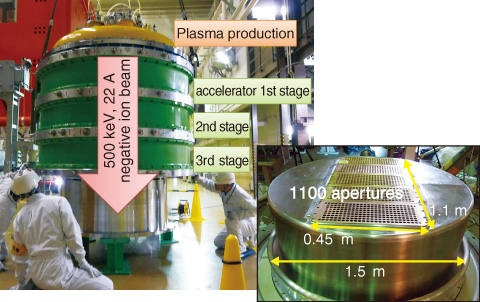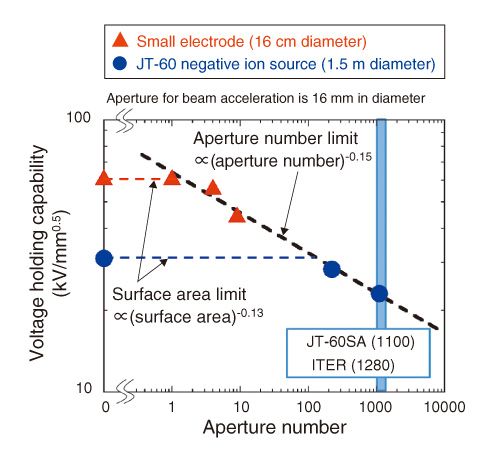
Fig.4-21 JT-60 negative ion source and acceleration grid

Fig.4-22 Relationship between aperture number and voltage holding capability
In fusion devices, high-energy deuterium beams (over several hundreds of keV) are required to drive the plasma current. To meet this requirement, a neutral beam injector based on a negative ion source (Fig.4-21) was developed for JT-60U and applied to plasma experiments for the first time worldwide. Recently, a beam energy of 500 keV was achieved by improving the voltage holding capability of an accelerator whose energy had been limited to below 400 keV.
The voltage holding capability of the accelerator is determined by the acceleration grids, which are characterized by a large number of apertures and a large grid size. A locally strong electric field is generated around the 1100 apertures on a wide surface 1.5 m in diameter in the JT-60 negative ion source, as shown in Fig.4-21. However, the voltage holding capability was designed on the basis of results obtained with a small electrode (0.2 m in diameter) without a locally strong electric field. The voltage holding capability with a locally strong electric field on a large grid has not been studied yet.
First, to investigate the weak points for voltage holding, we developed a visualization system for the breakdown positions. As a result, light emission accompanied by breakdowns was observed around the apertures; these breakdowns occurred at the 1100 apertures in random order. This led us to consider that the large aperture number might restrict the voltage holding capability. Next, the dependence of the voltage holding capability on the aperture number was investigated, as shown in Fig.4-22. In this figure, because the sustainable voltage depends on the square root of the gap length, the voltage holding capability is defined as the sustainable voltage normalized by the square root of the gap length. We found that the voltage holding capability depends on not only the size but also the number of apertures. This result also indicates that the voltage holding capability of the JT-60 negative ion source is limited by the aperture number.
The key point of the progress is the clarification of the breakdown positions that restrict the voltage holding capability. This result represents progress in the prediction of the voltage holding capability of the Satellite Tokamak Program (JT-60SA) and ITER ion sources. Moreover, it contributes to a better understanding in terms of the vacuum discharge between electrodes with a locally strong electric filed.